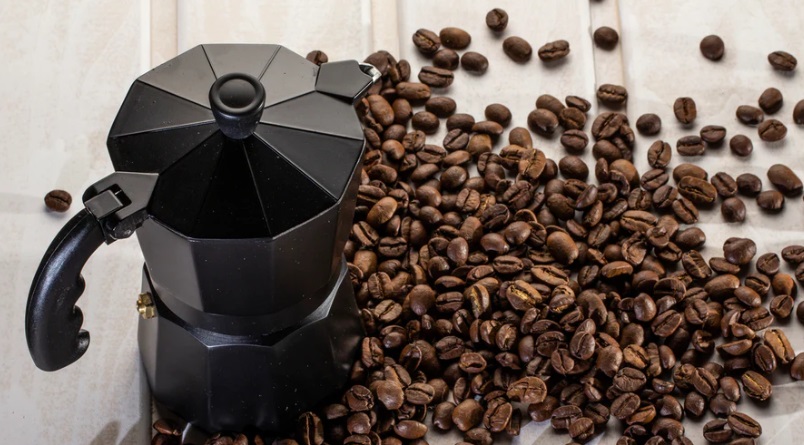
Among the various brewing methods, the percolator stands out for its rich, robust flavor. However, a common hiccup can dampen this experience: coffee grounds sneaking into the brew. Not only can this affect the texture, but it also impacts the overall taste, leaving a gritty residue that’s less than pleasant. This guide aims to arm you with practical tips and strategies to ensure your percolated coffee is as pure and enjoyable as possible.
Key Takeaways
- Use of Appropriate Filters: Choosing the right filter can make all the difference in preventing grounds from mingling with your brew.
- Importance of Coffee Grind Size: The coarseness of your coffee grounds plays a pivotal role in the filtration process.
- The Role of the Coffee-to-Water Ratio: Getting this balance right is crucial for a perfect percolation.
- Proper Percolator Maintenance: Regular cleaning and maintenance can prevent the buildup of residual grounds and ensure a smooth brewing experience.
Choosing the Right Filters
When it comes to percolating your coffee, the filter you choose plays a starring role in keeping those unwelcome grounds out of your cup. Let’s break down the filter options:
Paper Filters: These are the disposable heroes of the coffee world. They’re great at trapping even the finest grounds, ensuring a clean cup. Plus, they’re widely available—you can pick them up in most stores or online.
Metal Filters: If you’re leaning towards a more sustainable choice, metal filters are your go-to. They’re reusable and eco-friendly. While they’re excellent at filtering, they’re not quite as fine as paper, so pair them with a coarse grind to avoid any escapee grounds.
Doubling Up: Now, here’s a neat trick from the pros—use an extra filter. Adding a paper filter on top of the metal one can boost your filtration power. This combo is like a dynamic duo working to ensure your coffee is smooth, without any gritty surprises.
Coffee Grind Size Matters
Coarsely ground coffee is the percolator’s best friend. These chunkier grounds are less likely to make a break for it through the filter. Think of it like trying to sneak pebbles through a net—much harder than with sand, right?
Coarse grinds not only stay put better, but they also contribute to a rich, full-flavored brew. It’s a win-win for taste and texture.
Optimal Coffee-to-Water Ratio
Getting the coffee-to-water ratio right is like hitting the sweet spot in a game of darts—it’s crucial for the perfect brew. Here’s how to nail it for different percolators:
Stovetop Percolators: Aim for about 1 ounce of coffee for every 15 ounces of water. This ratio keeps things balanced, ensuring every sip is just right.
Electric Percolators: These guys like it a bit stronger. Go for 1 ounce of coffee for every 12 ounces of water. It’s the golden rule for electric percolation, giving you that robust flavor.
Measuring Tips: Precision is your friend. Use a kitchen scale if you can. Not only does it make you feel like a coffee scientist, but it also ensures you’re on point with your measurements every time.
Maintaining the Percolator
After each use, give your percolator a good rinse. Remove any coffee grounds and oils to prevent build-up. It’s like brushing your teeth but for your percolator. Once a week, treat your percolator to a spa day. Use a mix of vinegar and water to descale it, getting rid of any mineral deposits. Then, rinse thoroughly to avoid any vinegary surprises in your next brew.
Regularly inspect the basket, tube, and other components. If anything looks worn out or damaged, it’s time for a replacement. Think of it as keeping your percolator in top health.
Additional Tips
A little extra care goes a long way in brewing the perfect percolator coffee:
Avoid Overfilling: Just like overpacking a suitcase, overfilling your percolator can lead to spills and an uneven brew. Stick to the recommended capacity to ensure every cup is just right.
Water Temperature Matters: Aim for that sweet spot of 195°F to 205°F. Too hot, and you risk bitterness; too cool, and your coffee might taste underwhelming. A kitchen thermometer can be your trusty guide.
Brewing Techniques: Gentle does it. Pour water slowly and evenly, allowing it to seep through the grounds properly. Think of it as a leisurely stroll rather than a sprint.
FAQs
Why do I get coffee grounds in my percolator? It could be due to a fine grind, a misaligned filter, or overfilling. Stick to coarse grounds and ensure everything’s set up correctly.
Can I reuse coffee filters? While metal filters are reusable, paper filters are a one-and-done deal. Reusing them can compromise the coffee’s taste and cleanliness.
How often should I clean my percolator? Rinse after each use and deep clean weekly to maintain optimal performance and taste.
Final Thoughts
Ensuring a grounds-free cup of percolator coffee isn’t just about using the right filter or grind size. It’s a combination of proper setup, maintenance, and technique. By keeping an eye on your coffee-to-water ratio, ensuring your percolator isn’t overfilled, and monitoring the water temperature, you’re setting the stage for a flawless brew. Regular cleaning keeps the machine in top shape, safeguarding against residue that could mar your coffee’s taste.









